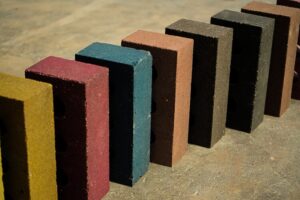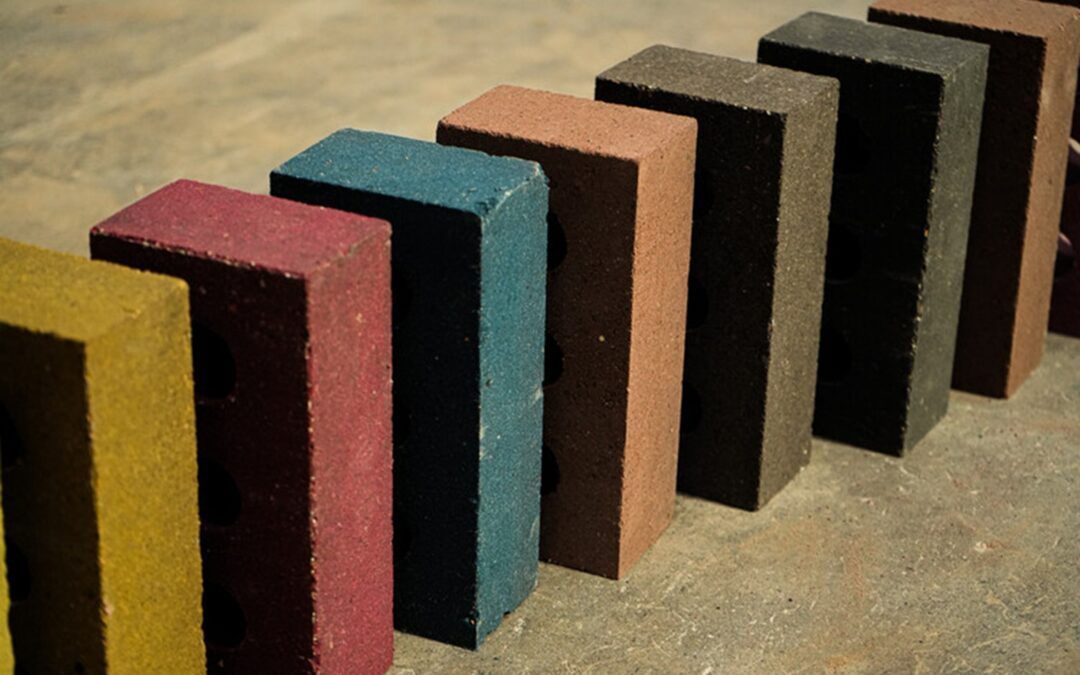Coffee, the world’s second-largest beverage, is consumed globally, resulting in approximately 9 million tonnes annually, and producing an estimated 18 million tonnes of wet spent coffee grounds (SCGs) as a by-product (May & Folkerts 2021, 29). Sadly, most of these SCGs end up in landfills, contributing to significant greenhouse gas emissions during decomposition or being treated as biowaste regardless of its opportunities as raw material for various industries. However, there’s a growing focus on recycling SCGs as a potential solution to mitigate these environmental issues (Saberian et al. 2021,16).
Beyond being mere waste, SCGs are rich in organic and inorganic compounds, offering potential as valuable byproducts across various industrial sectors (Kovalcik et al. 2018, 114). Recognizing the strain on non-renewable natural resources, the construction community has begun exploring methods to recycle SCGs into sustainable construction materials. Here are some exciting innovations:
- Bricks: Incorporating 17% SCGs into brick production can yield compressive strengths exceeding 10 N/mm² (Saberian et al. 2021, 11). Additionally, adding 15% SCGs to Al2O3 ceramics enhances porosity and thermal insulation (Kerolli Mustafa et al. 2022, 11).
- Subgrade Fillers: Blending SCGs with binders and other waste materials can create subgrade filler or road subgrade materials (Muñoz Velasco et al. 2016, 641).
- Thermal Insulators: Including 6% SCGs in plaster composites significantly reduces heating demands in winter and cooling requirements in summer, by 27.03% and 21.66% respectively, demonstrating SCGs’ efficiency as thermal insulators (Saberian et al. 2021, 11).
- Clay Materials: SCGs can serve as secondary clay raw material, producing lightweight clay construction ceramics with high thermal insulation capacities, thereby reducing a building’s energy consumption (Sena da Fonseca et al. 2014, 165).
- Sound Absorbing Applications: Liquified SCGs can enhance polyurethane foam for insulation in houses or roofs (Saberian et al. 2021, 12).
- Precast Concrete Panels: Utilizing SCGs in lightweight structural concretes due to their low density (Saberian et al. 2021, 12).
- Mortar Production: Adding 5% SCGs to construction mortars improves water absorption and insulation performance, contributing to sustainable building practices (La Scalia et al. 2021, 1812).
To harness these innovations, Preloved Coffee Oy (www.prelovedcoffee.com), the first Finnish startup dedicated to valorizing SCGs into valuable biomaterials, invites Finnish scientists to join us in developing more sustainable materials from SCGs to reduce the environmental impact of the construction industry. If you’re interested, please contact us at info@prelovedcoffee.com or call +358-451286664. Welcome to our green movement!

Source: Allthings.bio (The many ways…n.d.)
REFERENCE:
Kerolli Mustafa, M., Gabelica, I., Mandić, V., Veseli, R., & Ćurković, L. (2022). Reusing waste coffee grounds in the preparation of porous alumina ceramics. Sustainability, 14(21), 29-31.
Kovalcik, A., Obruca, S., & Marova, I. (2018). Valorization of spent coffee grounds: A review. Food and Bioproducts Processing, 110, 104-119.
La Scalia, G., Saeli, M., Miglietta, P. P., & Micale, R. (2021). Coffee biowaste valorization within circular economy: an evaluation method of spent coffee grounds potentials for mortar production. The International Journal of Life Cycle Assessment, 26, 1805-1815.
May, G., & Folkerts, J. (2021). Breaking new grounds for coffee, Institution of Food Technology and Science, Vol 35 (2), 28-31.
Muñoz Velasco, P., Mendívil, M. A., Morales, M. P., & Muñoz, L. (2016). Eco-fired clay bricks made by adding spent coffee grounds: a sustainable way to improve buildings insulation. Materials and Structures, 49, 641-650.
Saberian, M., Li, J., Donnoli, A., Bonderenko, E., Oliva, P., Gill, B., … & Siddique, R. (2021). Recycling of spent coffee grounds in construction materials: A review. Journal of Cleaner Production, 289, 1-16.
Sena da Fonseca, B., Vilão, A., Galhano, C., & Simão, J. A. R. (2014). Reusing coffee waste in manufacture of ceramics for construction. Advances in Applied Ceramics, 113(3), 159-166.
The many ways of turning coffee waste into valuable materials and products (n.d) Allthings.bio, https://www.allthings.bio/the-many-ways-of-turning-coffee-waste-into-valuable-materials-and-products/, retrieved on 13.03.2024.
